“The phrase ‘I’m sorry’ starts to lose its meaning when used too many times, especially by someone who claims to love you. Sorry is not love.”
—The Last I’m Sorry homepage
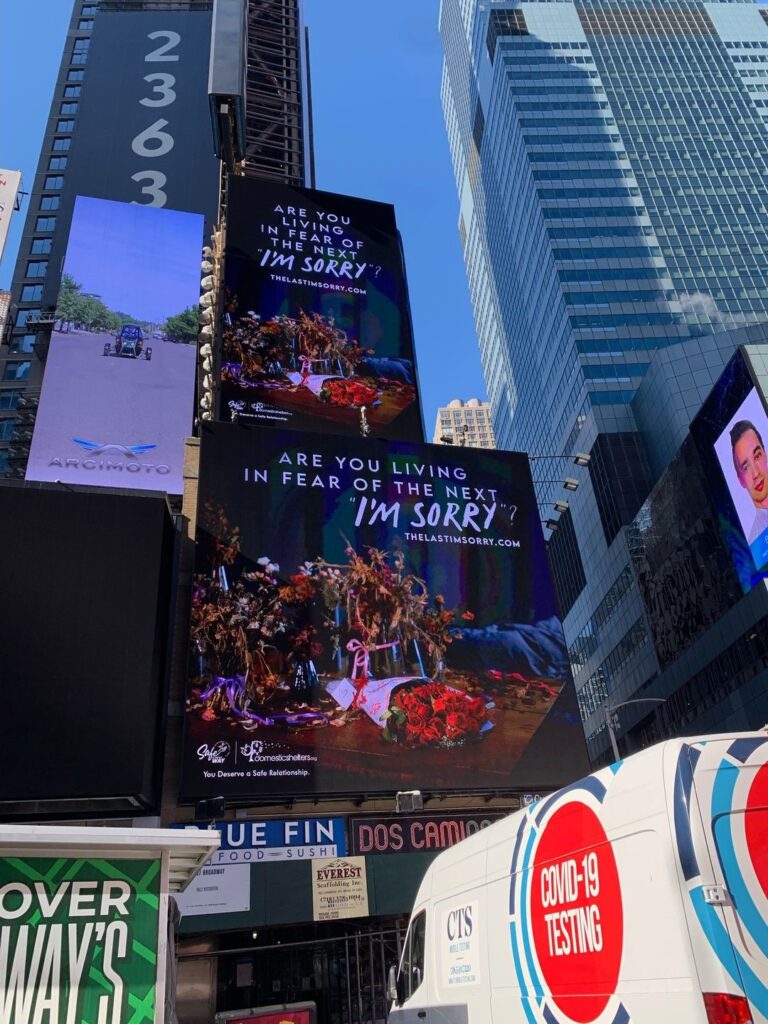
As another Valentine’s Day comes and goes, so does another dark anniversary: the third March in a global pandemic. A new campaign from Safe In Harm’s Way and DomesticShelters.org aims to highlight the twin shadow pandemic of domestic violence that has quietly risen amongst lockdowns, quarantines and overall more time spent at home.
Previously mishandled as a private matter, intimate partner violence is being destigmatized through campaigns that name the various tactics in an abuser’s toolbox—including manipulation, gaslighting, condom stealthing and weaponized incompetence. Platforms like TikTok have connected survivors and allies, making recognizing these forms of abuse easier, but pandemic-related isolation has also kept partners experiencing domestic violence from having access to the in-person support they need. This is why resources like The Last I’m Sorry are so crucial. The chilling campaign showcases another side of abuse: the inevitable apology.
Ms. sat down with Caroline Hammond, CEO of Safe In Harm’s Way, and Ashley Rumschlag, CEO of DomesticShelters.org, along with three of the creative minds behind the project at advertising organization NEON: Sam Lauro, Morgan Mellas and Lesia Gribbin, to discuss the rise in domestic violence and the importance of visibility, accountability and support.
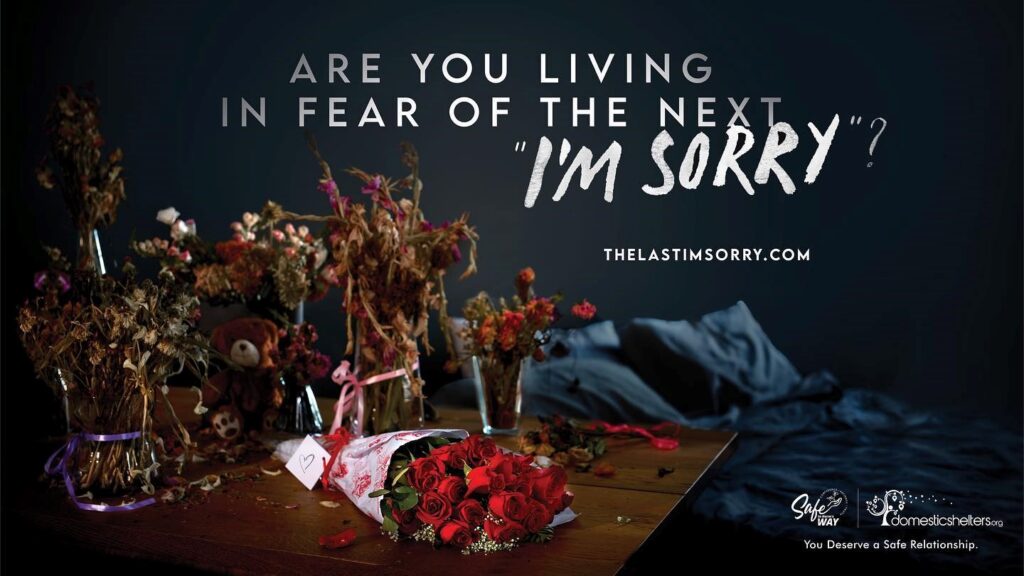
Ramona Flores: Why are we seeing an increase in domestic violence during the COVID-19 pandemic?
Ashley Rumschlag: Organizations like the United Nations and the American Journal of Emergency Medicine have come to a conclusion and published studies showing how there have been significant increases in domestic violence during the pandemic.
In talking with domestic violence professionals and survivors themselves, these conclusions are backed up by anecdotal evidence as well. It’s not surprising because if you’re forcing a person to quarantine with an abuser, coupled with added financial strains, it is likely to exacerbate existing patterns/methods of abuse.
If we’re talking about the isolation factor, it is a common tactic used by abusers. They try to isolate their partner from friends, coworkers and family, which is made easier with remote work. Abusers are able to control those last lifelines that were easier to access before the pandemic.
If you’re forcing a person to quarantine with an abuser, coupled with added financial strains, it is likely to exacerbate existing patterns/methods of abuse.
Ashley Rumschlag
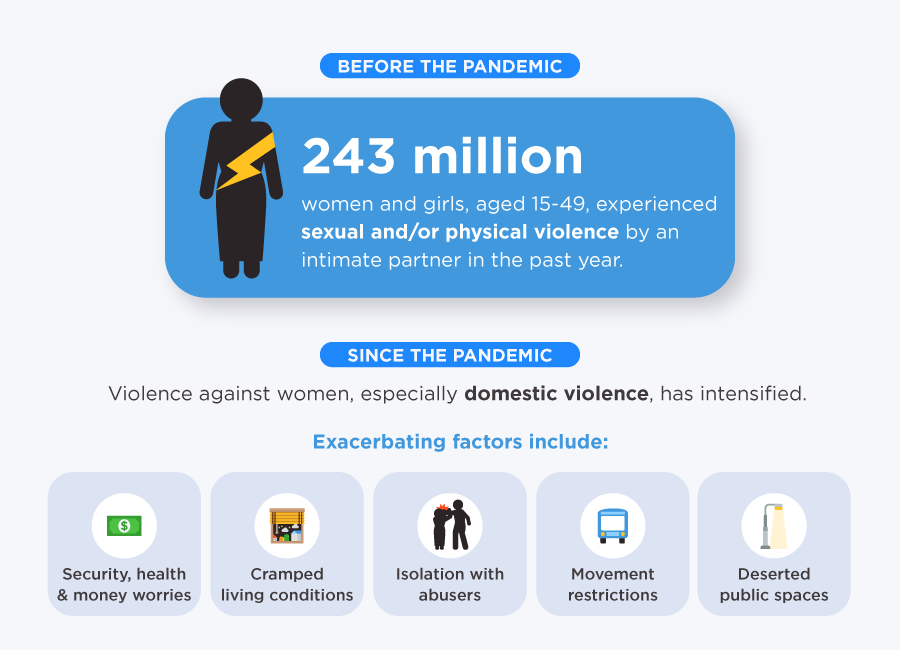
Flores: Why was it important to make this such a public and visible campaign?
Caroline Hammond: This campaign actually started back when the pandemic first started. The first billboards were launched in Missouri and Kansas. It stemmed from a friend offering billboard space for a Safe In Harm’s Way campaign. He said, Caroline, what if I gave you billboards?
Originally, it was my face on the billboards.
We launched first in St. Louis, then Kansas City. After that first iteration, our website traffic increased by 312 percent. It was clear people needed and wanted access to this information. From there, I connected with the Out of Home Advertising Association of America and we shifted from using my face to instead showcase the emotions that come from being abused, along with portraits of survivors.
We decided to keep the emphasis on feelings and relationships, as we discovered in our evolution as an agency, people deflect from identifying as being abused. If you talk to survivors, there’s a lot of people who say, ‘I didn’t even realize I was being abused.’
With this iteration of the campaign, we wanted to get it in Times Square because there’s roughly 400,000 people that walk through every day, and it elevates the noise level around the program in its entirety. It also allows us to get through to every market demographic we can.
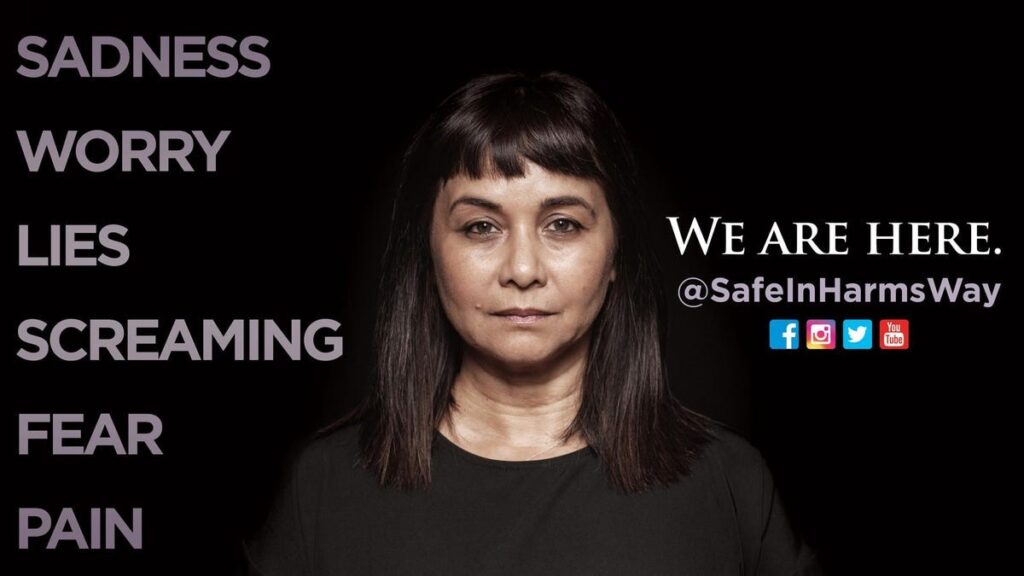
Flores: Can you tell us about the safety features enabled on the Last I’m Sorry website and why they’re important?
Morgan Mellas: That was definitely one thing we were very concerned about across the board. We wanted the website to be as inclusive as possible on one hand. On the other hand, for anybody who might be trying to access it, safety is especially important as this is a demographic perpetually put in harm’s way.
If the user is in a situation where they need to escape very quickly, have to worry about their safety online or are being monitored by their abuser, these resources need to be safe. We took note of DomesticShelters.org and the National Domestic Violence Hotline’s safety features, with the main precaution allowing the user to click on an ‘x’ button that automatically redirects to a safe site.
In our case, it redirects to a blank Google homepage. The homepage also doesn’t allow the user to click back. Our cookie policy gives the user an option to make the website inaccessible for 48 hours, in case an abuser catches the user online and they need to wait to re-access it later.
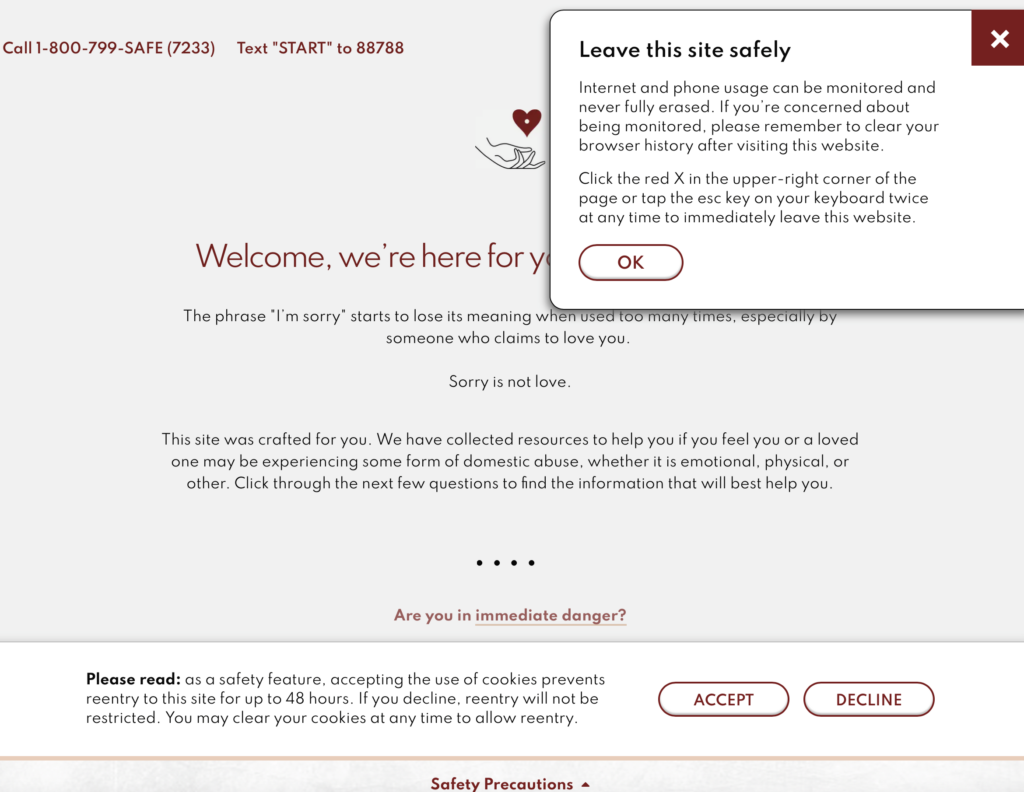
Lesia Gribbin: We also decided to keep the look and feel of the campaign agnostic, so to anyone not actively using the site, it’s not necessarily clear what it is. If someone is looking over the user’s shoulder, it looks like any common quiz or website.
Sam Lauro: Even for the URL, we wanted to make sure it wasn’t a very obvious URL that would make an abuser think twice. We want to be super innocuous and make sure that if an abuser is going through the browser history, it wouldn’t call any special attention to it.
Flores: Can you share more about the design process of the campaign, especially the choice to work with such a big name in graphic design like Sarah Coleman?
Sam Lauro: Designing a billboard campaign is a process. To start from the beginning, we wanted it to be rooted in truth because we wanted it to really resonate with people.
We took time to look through resources, firsthand experiences and we talked with domestic shelters, including Safe In Harm’s Way. We really embraced their perspectives and tried to capture the truth of what they were going through.
It became clear to us in various conversations that we wanted to focus on the nuanced part of domestic violence. We wanted to step away from the more stereotypical representation of physical violence, to highlight manipulation and all of the other aspects of domestic violence—emotional, spiritual, financial. That’s where the birth of this idea came from—this love loop where someone is controlling you through emotional manipulation. We want to show it visibly.
That brought us to the design portion of the campaign. We were greatly inspired by portraits painted by the old masters, the dark, macabre portraits where it shows a still of different various elements of life. It tells a full story without showing an actual person. It’s very haunting and there’s a lot of emotions captured in the image. We used that and had a photoshoot with Johnny Miller, it was an amazing process. Our prop designer had a bunch of bouquets in various states of decay. We added the bed to portray the relationship’s existence, and Sarah Coleman created the typography that aimed to show how the “I’m sorry “ from the abuser wasn’t even an afterthought anymore—just a lie to perpetuate the cycle.
The “I’m sorry “ from the abuser wasn’t even an afterthought anymore—just a lie to perpetuate the cycle.
Sam Lauro
Flores: What resources would you like to share with the Ms. audience? What are some direct actions allies and advocates for survivors can do?
Caroline Hammond: As part of Safe In Harm’s Way, we have a place where people can share their experiences, either anonymously or as themselves, as a form of healing. Sharing that resource with the people in your life is impactful.
We also have a team of social media influencers called SMART warriors, which stands for Social Media Action Response Team and they share resources for survivors. That’s our largest source of referrals. Just sharing these resources has fostered an increase in men seeking these resources for women they love.
Another direct action would be to utilize the Last I’m Sorry link. It allows the user to access the resources that apply to them—whether you’re a man or woman, part of the LGBTQIA community and/or a person of color, you’ll be able to find what you need.
Up next:





